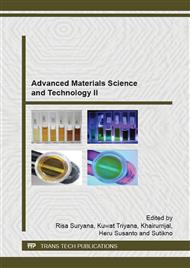p.31
p.35
p.42
p.46
p.55
p.61
p.65
p.69
p.73
Investigation on the Elastic Modulus of Rubber-Like Materials by Straight Blade Indentation Using Numerical Analysis
Abstract:
The indentation technique has been proven to be useful in determining mechanical properties of materials, but it is rarely applied to rubber-like materials (elastomers). It is difficult to describe accurately the mechanical properties of an elastomer by theoretical formulation due to its complex material behaviour. Indentation of a Styrene Butadiene Rubber (SBR-0) material by a rigid straight blade with a tip angle of 45 and 60 degrees was performed to estimate the elastic modulus. Indentation was carried out numerically by finite element analysis (FEA) and for the elastomer the hyper-elastic material model of Mooney-Rivlin is used. The estimated elastic modulus was calculated based on the contact depth. The predicted result was also verified by tensile test results. It was found that the predicted elastic modulus of the elastomer agrees with the tensile test result.
Info:
Periodical:
Pages:
55-58
Citation:
Online since:
August 2015
Authors:
Keywords:
Price:
Сopyright:
© 2015 Trans Tech Publications Ltd. All Rights Reserved
Share:
Citation:


